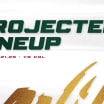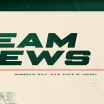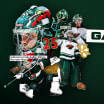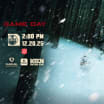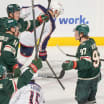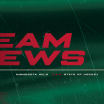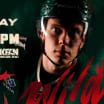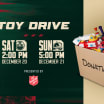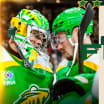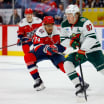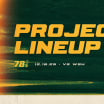When John Kirk's phone buzzes a few days before the NHL Trade Deadline, there's a good chance he knows one of his players has been moved.
And that means he's about to get to work.
Kirk is a pro services representative for Warrior Hockey apparel and equipment, a company that services hundreds of players in the NHL.
Trade deadline provides unique challenges for Wild equipment staff
Newcomers often have to adjust on the fly to new surroundings, and to new gear
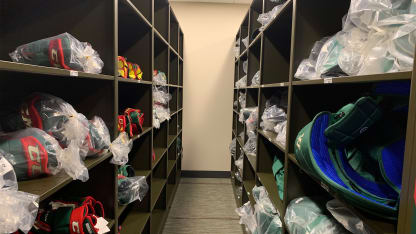
By
Dan Myers
Wild.com
On this particular day, five days before the deadline, Kirk was on an airplane when he was notified that one of Warrior's players, Ryan Donato, was on the move from Boston to Minnesota.
Kirk has eight NHL teams that he services, and while the Bruins aren't one of them, the Wild is. Even though he's 30,000 feet above the ground, the efforts to get Donato properly outfitted begin long before he's wheels down.
"Our radar is on all the time, especially around the trade deadline," Kirk said. "Once a trade is made, we're all on every feed. We're notified by the team ahead of time, but usually we know ourselves up front. Then we're on with our guy and he jumps on the factory."
The biggest thing Kirk wants to get Donato outfitted with is proper gloves.
Every team has breezers of all different sizes and brands located in their equipment closets. Specific colored helmets are also in a team's possession. For the Wild, that's a bevy of green helmets of all brands.
Gloves are different. Every team will have a basic pair that can usually get pretty close to what a player prefers. But technology has evolved to the point where companies measure a player's hand size using scans so that even the smallest of details are custom built into a glove.
Each player's glove is specifically tailored to his personal preferences, something a basic, stock glove doesn't provide.
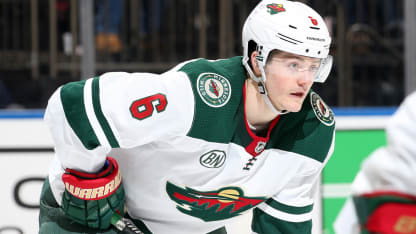
© Getty
"The gloves are the biggest thing," Kirk said. "You have to make sure these guys have what they need."
So with his plane in the air, Kirk reached out to his colleague in charge of servicing the Bruins to get an idea of what Donato's preferences are, the kinds of sticks he uses, his gloves, helmet, breezers and other needs might be.
Warrior will reach out to its factory in Asia within hours, sending Donato's measurements and requests. Including shipping time, it typically takes 10 days or less for Donato's personalized green and red gloves to arrive.
In Donato's case, he was traded to Minnesota on Wednesday, Feb. 20.
Want more Wild headlines? [Sign up for e-News]
"I think we had gloves here the following Monday or Tuesday for him," Kirk said. "It's pretty amazing how quickly they can get done."
When a player is traded from one place to another, it becomes the job of a team's equipment staff to make sure he matches his new teammates on the ice.
For the Wild, it's a job that falls on head equipment manager Tony Da Costa and assistants Rick Bronwell and Matt Benz.
Any player acquired will head to his new town with a bag full of his equipment. Things like shoulder pads, elbow pads, shin pads and jock straps are not visible under breezers and jerseys, so players can continue to wear them no matter what team they play for. Skates are neutral colored and can be brought from team to team.
Players also head to the airport to join their new teams with a bundle of sticks -- sometimes with more than a dozen in their possession.
And while Kirk is worried about getting a player the proper gloves, Da Costa's main concern is getting a jersey. Like gloves, a player's jersey must be personalized.
Normally, Da Costa would call down to Exclusive Pro Sports in Rockford, Illinois, the company that has made the Wild's jerseys for years. He'll order a couple jerseys in both colors and have them overnight shipped to Minnesota, where they can be deployed at will.
After receiving news of any trade, the first thing Da Costa will do is reach out to the new player and present him with a choice of jersey numbers.
Sometimes, it's easy.
In the case of Kevin Fiala, his No. 22 that he wore in Nashville had become available in Minnesota several weeks earlier when the Wild traded Nino Niederreiter to the Carolina Hurricanes.
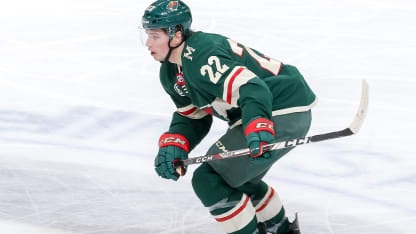
© Getty
"I won't ever assume he wants it, so I'll try and talk to the player and ask him if he wants that number again," Da Costa said. "I didn't actually talk to Kevin about 22, but I asked [Predators equipment manager Pete Rogers] if he wanted 22 there, and he said he did. So I knew that would be a safe number to give him here."
Sometimes, it's not so simple.
Donato wore No. 17 with the Bruins, a number occupied in Minnesota by Marcus Foligno. He wore No. 16 at Harvard University, another number already being worn by Jason Zucker. When Donato chose No. 6, it actually worked out perfectly. Da Costa was already on the team plane on the tarmac waiting to take off for New York.
Without enough time to order a road jersey for the following night at Madison Square Garden, Bronwell took a No. 6 jersey that had belonged to former Wild defenseman Ryan Murphy and simply sewed a new name plate on the back.
It worked because Murphy and Donato wear the same size sweater.
"That worked out for us," Da Costa said.
Da Costa's crew will get in touch with their counterparts on the other team to get a guy's sizes for his breezers and his helmet, and also what brand they prefer. One of them will head back to the team's massive equipment closet at TRIA Rink, grab it off the shelf and unwrap it. It's as simple as that.
In Donato's case, they had to dig into their emergency bag of equipment to get him outfitted with breezers and a helmet.
"We just wanted to get him out on the ice," Da Costa said.
The crew also had to improvise after trading Mikael Granlund for Fiala.
Acquired on the trade deadline, the Wild was on the team charter on its way to Winnipeg less than two hours after the deal with Nashville was consummated.
Not wanting to chance a customs snafu or a delay, the crew took one of its stock green jerseys and had the Hockey Lodge inside Xcel Energy Center press the numbers and letters on it (Minnesota wore its green home sweaters in Winnipeg as the Jets chose to wear their white Heritage Classic jersey).
Bronwell then sewed them onto the sweater.
🇨🇭 #22 pic.twitter.com/GtyCRcxj0x
— Minnesota Wild (@mnwild) February 26, 2019
"Until you have it in hand, you're always nervous until you see it, because you never know," Da Costa said.
When talking with the other trainer, Da Costa will also take note of other things.
"What does he sharpen his skates at? Does he want his skates sharpened before the morning skate or after it?" Da Costa said. "What's his specs on sticks, skates, gloves? What are you sending us?"
At that point, Da Costa will also chat with a guy like Kirk to make sure everyone is on the same page in terms of what is being ordered and how many.
Again, every player is different.
Fiala said he likes to break in a new pair of gloves every two or three weeks, so wearing a pair of brand new gloves in a game wasn't a huge adjustment for him.
With Donato, he may only use two or three pairs of gloves in an entire season, so breaking them in quickly is of utmost importance for optimum comfort.
Because breezers have a team's logo on them, all players will be forced to break in a new pair with the proper colors and marks. But in the middle of the season, the only thing most players care about is getting comfortable in their new surroundings as quickly as possible.
Sometimes that means spending time outside their normal comfort zone when it comes to equipment they have spent years breaking in.
That's just the way it goes.
"It's a matter of just getting him on the ice as seamlessly as we can," Da Costa said. "It's not our fault they got traded, it's not their fault they got traded. You can't have an inventory of everything for every player; it's just impossible. So you get the player in and go from there."


